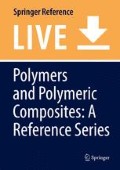Abstract
While the growing interest in sustainable sourcing has led to a revival of interest in particulate fillers derived from biomaterial sources, this is nothing new. Wood flour was one of the first fillers used in plastics, and rice hull-derived silica was being promoted for use in place of some carbon blacks in the 1970s.
In addition to their sustainability credentials, many of these fillers offer other advantages, particularly weight saving, over minerals. On the other hand, they frequently have a number of limitations including higher cost, poorer thermal stability, color issues, and moisture sensitivity which have hindered their acceptance. Even so, renewed effort is going into their development, especially that of nano-sized particles.
Wood flour is the standout commercial example today, with large volume use in wood polymer composites. Starch, cellulose, lignin, and even proteins are being explored as nanoparticles, especially for tire use. Although their use as a carbon black replacement failed to develop, rice hulls are still being developed for other applications and even as a raw material for precipitated silica filler manufacture.
References
Aysawarya EP et al (2012) Rice husk ash, a valuable resource for HDPE, materials and design, vol 41, Oct 2012, pp 1–7
Bastioli C (2002) Chapter 6, starch-polymer composites. In: Scott G (ed) Degradable polymers, 2nd edn. Kluwer Academic Publishers, Netherlands, pp 133–161
Chaudhary DS et al (2004) Recycling rice hull ash: a filler material for polymeric composites? Adv Polym Technol 23(2):147–155
Hashimi SA (1983) Particulate starch, its effects as a filler In high density polyethylene. PhD thesis, Department of non-metallic materials, Brunel University, Uxbridge. Oct 1983
Haxo HE, Mehta PK (1974) Ground rice hull ash as a filler for rubber. Paper presented at the 106th meeting of the rubber division of the American Chemical Society, Oct 1974
Lin N et al (2011) Preparation, modification, and application of starch nanocrystals in nanomaterials: a review. J Nanomater 2011, Article id 573687, 13 p. doi:10.1155/2011/573687
Linero GCO (1979) Suitability of tropical starches as fillers and reinforcement for thermoplastics and polyester resins. PhD thesis department of non-metallic materials, Brunel University, Uxbridge, Oct 1979
Mainka H et al (2015) Lignin powder as a filler for thermoplastic lightweight design components, ATZ worldwide eMagazines issue no.: 2015-03, 0312015, vol 117
Rubber World (1977) Opal black: from rice hulls to rubber filler, Rubber World, Aug 1977, pp 28–29. (Anon)
Srilathakutty R et al (2002) Rice hull ash as a filler in microcellular soles. Int J Environ Stud 59(1):133–142
University of Austin in Texas (2013) Blue-green algae being engineered for nanocellulose; a report in AlgaeIndustryMagazine.com, 9 Apr 2013
Author information
Authors and Affiliations
Corresponding author
Editor information
Editors and Affiliations
Rights and permissions
Copyright information
© 2016 Springer-Verlag Berlin Heidelberg
About this entry
Cite this entry
Rothon, R. (2016). Fillers from Organic Sources. In: Palsule, S. (eds) Polymers and Polymeric Composites: A Reference Series. Springer, Berlin, Heidelberg. https://doi.org/10.1007/978-3-642-37179-0_22-1
Download citation
DOI: https://doi.org/10.1007/978-3-642-37179-0_22-1
Received:
Accepted:
Published:
Publisher Name: Springer, Berlin, Heidelberg
Online ISBN: 978-3-642-37179-0
eBook Packages: Springer Reference Chemistry and Mat. ScienceReference Module Physical and Materials ScienceReference Module Chemistry, Materials and Physics

